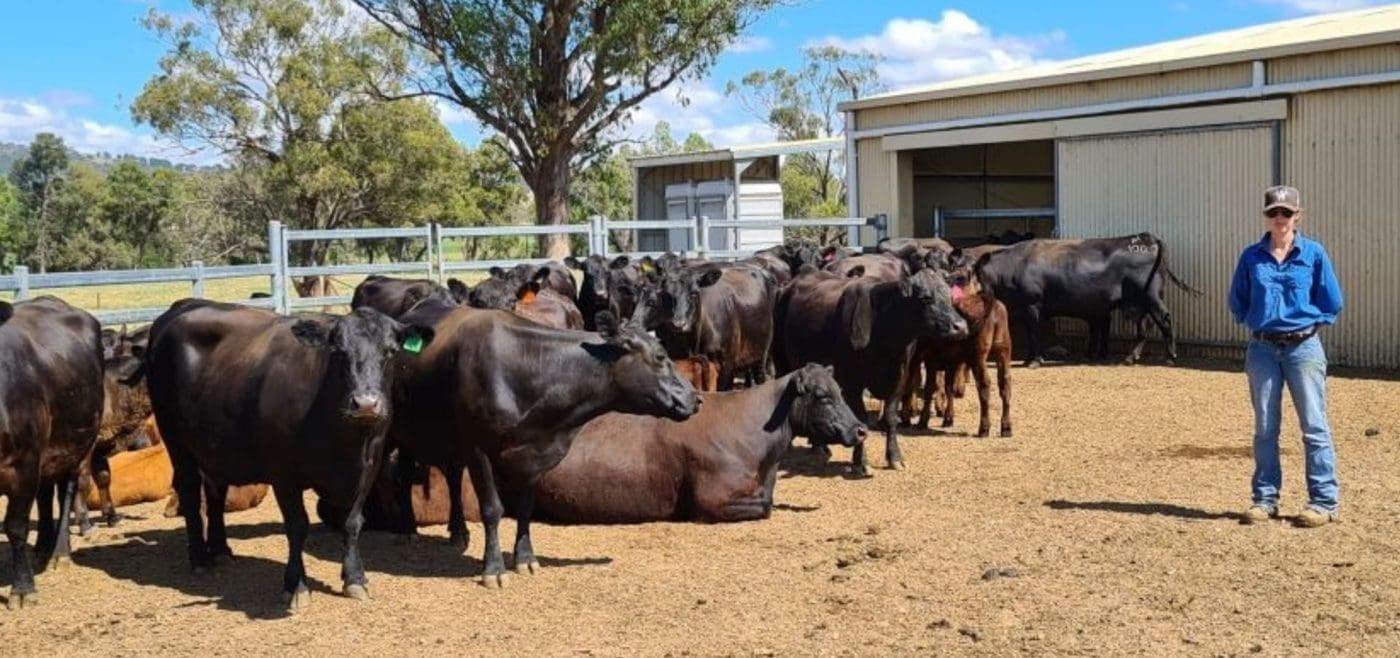
A CHARLES Sturt University PhD student has been awarded a scholarship that will allow her to continue her research into the effect of lucerne on fertility in beef cattle.
Jessica Wyse has already completed a Bachelor of Agriculture and Bachelor of Science (Honours) at Charles Sturt in Wagga Wagga and is now one-and-a-half years into a Doctor of Philosophy (Animal and Veterinary Science).
She is currently working for another PhD project as a laboratory technician and working casually for Graminus Consulting while completing her research into the topic, ‘Characterisation of coumestans in lucerne and their effect on fertility in beef cattle.’
Her supervisor, Associate Professor in Veterinary Reproduction Cyril Stephen, suggested the research topic when he was alerted to the problem through interaction with producers and vets.
The research examines the effects of coumestans, a class of plant-produced oestrogens produced in response to plant stressors on the oestrous cycle, ovulation and conception rates of beef cattle through cattle trials, field trials and glasshouse experiments.
The findings will inform practices for pasture production, beef and dairy industries and commercial hay producers.
Ms Wyse received the Tim Healey Memorial Scholarship through the AW Howard Memorial Trust Program, which fosters and supports pasture research throughout Australia.
Worth $10,000 per year for up to three-and-a-half years, the scholarship, means Ms Wyse will be able to afford costs associated with her research, including equipment, drugs and consumables for the cattle trials, sampling and analysis, manuscript publishing costs, and travel.
“Through participating in this project as an Honours and now a PhD student, this area of research has become something I am passionate about, not only in researching but educating the relevant industry bodies,” she said.
“To receive funding to be able to aide this project in research and education means a lot to me.”
Ms Wyse said having funding available for this type of research was vital because of the difference it can make in multiple agricultural industries.
“This is an area of research that has had limited attention in recent years, especially with regards to cattle and lucerne, and falls between the specific areas pasture production and livestock reproduction. So seeking scholarships to fund this type of research has been difficult,” she said.
“It is important to have funding available and promotion for these types of projects, because it not only benefits cattle producers and lucerne growers, but it also provides information to fill in some of the unknown areas of cattle reproduction and provides information back to seed companies.”
The research team also received a further $10,000 last week from the McCaughey Memorial Institute to go toward operational funds for the project.
Source: CSU

Great news. Congrats. I will be most interested to follow results. Note that fertility problems in dairy cattle grazing lucerne were reported more than 60 years ago (see review at https://www.mdpi.com/2077-0472/6/3/35/htm )
While there have been many studies with coumestans affecting fertility in sheep, we especially need more equine studies on this issue where awareness seems low.
I came to realise that lucerne had something to do with a drop in conception rates in my heifers about 4 years ago . I had been joining my heifers in August for a june calving for many years consistently getting 85 to 90% in calf run under a rotational grazing program . I moved the heifers to another property when I moved there as well , and they spent a lot of time running on lucerne . Conception rates immediately dropped to 75 to 80% .
I split the heifers in half & sent one lot back to the rotational grazing property & rate went back to 90% , while the others stayed on lucerne country with no change in conception still in the 70,s . All heifers are now run on a rotational grazing system on mostly native grasses .
THis is a very good research project & I will be most interested in the final results .
Regards Mal Hufton , Harden .NSW
Congrats – I had experience with embryo work with cows running on lucerne in the 1980s which was not very successful. I would like to have a discussion with you
Hi Allan, feel free to send me an email at jwyse@csu.edu.au.